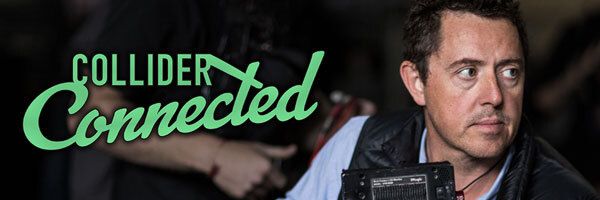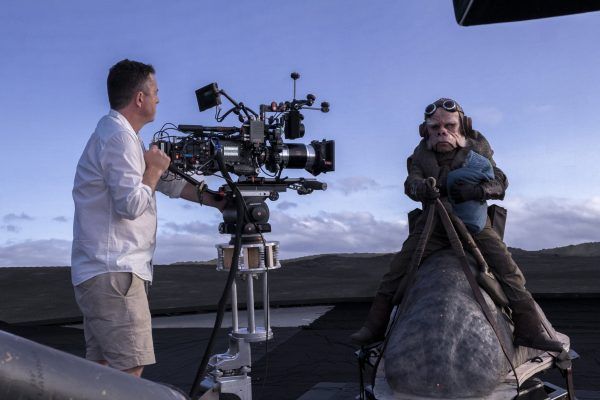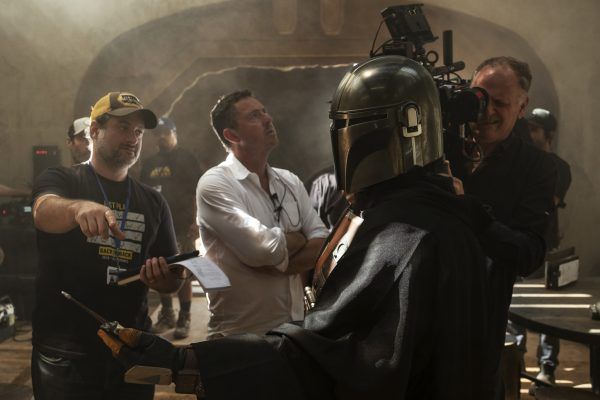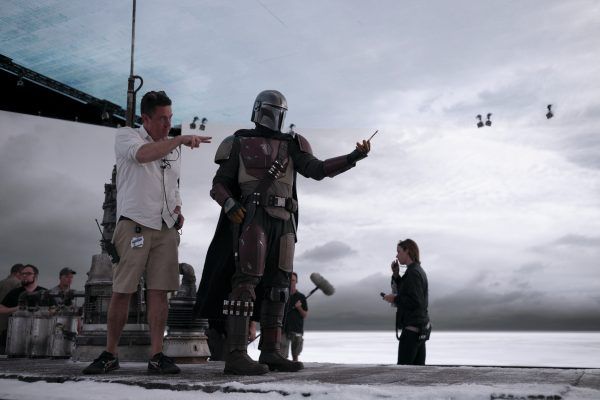-
There’s a reason that Greig Fraser is one of the most in-demand cinematographers working today. He’s not only great at his job, capturing evocative images across a diverse range of films, but he’s tremendously adept at adapting to new circumstances. On Rogue One it was figuring out how to make the first-ever Star Wars spinoff visually distinct. On Killing Them Softly it was using slow-motion photography in a striking way. On Zero Dark Thirty it was figuring out how to make the camera see nightvision. On Foxcatcher and Vice it was doing service to the tremendous prosthetics work that had been applied to the performers. Even on Lion it was using LED lights to capture striking imagery onscreen. And of course on The Mandalorian, the live-action Star Wars TV series, it was creating and utilizing groundbreaking new technology to render visual effects backgrounds in real-time.
Fraser and I discussed all of this and more in a lengthy deep-dive interview about his craft and career as part of our Collider Connected series. During the discussion (which took place back in mid-May), we talked about his first transition from stills photography to cinematography, and his experience working with Jane Campion on Bright Star. We dug into the different kinds of relationships a cinematographer has with a director, and the wildly differing degrees of freedom a DP might have from project to project.
We also talked about Fraser’s first film with director Matt Reeves, the critically acclaimed vampire drama Let Me In, and why Fraser didn’t watch the Swedish version before shooting the American adaptation. We then tracked Fraser’s experience on Kathryn Bigelow’s Zero Dark Thirty and the challenge of figuring out how to shoot the climactic raid sequence, and we discussed Bennett Miller’s underrated Foxcatcher and the delicate nature of lighting the intense yet impressive prosthetics that the actors were wearing.
The discussion then veers heavily into the sci-fi realm, as we talked at length about Fraser’s experience on Rogue One. The cinematographer admitted he at first wasn’t sure he could accept the project – he’s such a huge Star Wars, he couldn’t see how he could possibly be objective. But in talking with director Gareth Edwards, he got excited by the prospect of making a very different kind of Star Wars movie, one inspired more by war films like Saving Private Ryan. Fraser also talked about the extensive reshoots on that film and the pressure the entire filmmaking team was under to deliver.
We then discussed Fraser’s incredible and genuinely groundbreaking work on The Mandalorian, and how a new kind of pressure was added in that fact that a hefty sum had been invested into technology that had to work. Indeed, Fraser detailed the phenomenal technological advances on The Mandalorian that allowed him to light scenes with fully rendered visual effects backgrounds. No longer did he have to guess what VFX component would be added in post-production. During this part of the interview, Fraser goes deep on the making of The Mandalorian, showing George Lucas the technology, lighting Baby Yoda, and why he believes this technology will sooner or later be used by almost every production big or small.
Finally, we briefly touched on Fraser’s work on the highly anticipated upcoming projects The Batman and Dune.
This is an in-depth, wide-ranging, and free-flowing conversation with one of the best cinematographers working today, and it’s clear from hearing Fraser speak that he has a passion not just for his craft but for pushing the boundaries of what’s possible in cinema. He’s genuinely excited about trying new things and thinking of new ways to approach a scene or project, and I think that’s probably part of the reason why he’s so consistently great at his job.
Check out the full interview above and a list of what we discussed below. And for more deep-dive Collider Connected interviews, click here.
- What’s he been doing during quarantine?
- Was he always a film fan growing up? Talks about applying his skills as a photographer to filmmaking.
- Working with Jane Campion on Bright Star and finding his way into becoming a cinematographer.
- The different kinds of relationships he has as a cinematographer with a director, and the push-and-pull between creative freedom and executing a director’s vision. He says he relishes all kinds of working relationships.
- Let Me In and working with director Matt Reeves for the first time. Says he made the film without seeing the Swedish version after discussing it with Reeves.
- Reuniting with Reeves for The Batman.
- Working with Kathryn Bigelow on Zero Dark Thirty. The nightvision photography and crafting the raid sequence.
- The experience of making Foxcatcher, working with Bennett Miller, and why the film is underrated. The dark mood on set, and working with the prosthetics.
-
Rogue One and not being convinced he’d be able to shoot a Star Wars film because he was such a huge fan.
- Initial conversations with Gareth Edwards and tackling Rogue One with a Saving Private Ryan-inspired approach.
- The Rogue One reshoots and his experience as the cinematographer while Tony Gilroy came in and retooled the third act. Talks about the pressure of making the first-ever Star Wars spinoff.
- The Mandalorian. How Jon Favreau first described the project and the early days of figuring out if the technology would work.
- How the LED panel technology on The Mandalorian works, and why it’s game-changing for the industry.
- Lighting Baby Yoda and how the technology is evolving for Season 2 of the show.
- What’s the post-production like on The Mandalorian?
- Working with Denis Villenueve on Dune.




